Dominique Luchart's Blog, page 595
June 14, 2021
How much energy can be created at one time?, ,
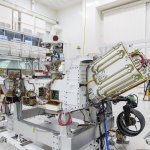
This article was originally published at The Conversation. The publication contributed the article to Space.com’s Expert Voices: Op-Ed & Insights .
Xuejian Wu , Assistant Professor of Physics, Rutgers University – Newark
Above our heads there is a powerful energy source created by nature, the Sun. Because the Sun is 93 million miles from us, only one-billionth of the Sun’s total energy output reaches the Earth, creating a world blooming with life. The energy that the sun gives the Earth’s surface every second is more than the total electricity generated from all power plants in the world in the entire year of 2018.
Here on Earth, humans power machines mostly by harvesting energy: for example, harvesting the energy of falling water and converting it to electricity in hydroelectric power plants. To create energy, you have to convert matter to energy.
Chain reactionsOne way to do that is to split atoms, the basic building blocks of all matter in the universe. Do so controllably and you can produce a steady flow of energy. Lose control and you release a lot of energy all at once in a nuclear explosion.
The core of every atom, the nucleus, is made up of even smaller particles, protons and neutrons. The force holding the nucleus together stores a huge amount of energy. To obtain energy from the nucleus, scientists came up with a process of splitting a heavy atom into lighter atoms. Because the lighter atoms don’t need as much energy to hold the nucleus together as the heavy atoms, energy is released as heat or light. This process is called nuclear fission.
When one atom is split, a chain reaction starts: The split atom will trigger another atom to be split, and so on. To make the chain reaction controllable, scientists developed ways to slow down the splitting, such as absorbing some of the split particles.
Nuclear powerNuclear power plants harvest the energy released by splitting atoms controllably. The world’s largest nuclear power plant is the Kashiwazaki-Kariwa Nuclear Power Station in Japan. It consists of seven nuclear reactors, with a maximum capacity of about 8,000 megawatts. The world’s largest single nuclear reactor is a tie between the two reactors at China’s Taishan Nuclear Power Plant. Each Taishan reactor has a capacity of 1,750 megawatts.
This amount of power is much smaller than uncontrolled nuclear reactions, such as atomic bombs. Nowadays, the energy output from detonating an atomic bomb is equivalent to the electricity the Kashiwazaki-Kariwa plant generates in half a year.
A downside of fission is nuclear waste. The split atoms are usually unstable and emit dangerous radiation. Nuclear waste needs to be stored properly for many years.
Nuclear fusionScientists have also discovered another type of nuclear reaction, one that produces energy without nuclear waste. As two lighter atoms combine into a heavy atom, the lost mass converts into energy. This process is called nuclear fusion. Fusion is happening in the core of the Sun. Every second, the sun burns about 600 million tons of hydrogen into about 596 million tons of helium, yielding energy equivalent to trillions of atomic bombs.
However, it is very difficult to achieve nuclear fusion on Earth. Fusion happens only at extreme conditions, such as the very high temperatures and pressure of the Sun. Scientists have yet to effectively demonstrate controllable nuclear fusion that produces more energy than it consumes, but they are working hard to do so. One way is to shoot high-power lasers from different directions at a tiny speck of hydrogen isotopes.
Nuclear fusion energy would be a promising energy solution in the future. But don’t forget, we have a huge nuclear fusion reactor above our heads, the Sun. With the improving efficiency of solar energy, we don’t even need to create energy, just capture more of what the Sun gives us every day.
This article is republished from The Conversation under a Creative Commons license. Read the original article .
The post How much energy can be created at one time?, , appeared first on NEWDAWN Blog.
Netflix is producing a ‘fictionalized’ series about Spotify, Catie Keck
 [image error]
[image error]Netflix has tapped the original story of one of the music industry’s biggest startup successes for a forthcoming untitled original series. The series will tell a “fictionalized account” of Spotify’s co-founders, including the service’s chief Daniel Ek.
The six-part series — which is already listed on Netflix, though with limited information — will pull from authors Jonas Leijonhufvud and Sven Carlsson, which documents the rise of Spotify under Ek and his business partner Martin Lorentzon, according to Variety. The book is said to have drawn from “over seventy interviews, along with previously untapped sources” for a “David vs Goliath story about how strong convictions, unrelenting willpower, and big dreams can help small players take on…
The post Netflix is producing a ‘fictionalized’ series about Spotify, Catie Keck appeared first on NEWDAWN Blog.
Netflix is producing a ‘fictionalized’ series about Spotify,

Netflix has tapped the original story of one of the music industry’s biggest startup successes for a forthcoming untitled original series. The series will tell a “fictionalized account” of Spotify’s co-founders, including the service’s chief Daniel Ek.
The six-part series — which is already listed on Netflix, though with limited information — will pull from authors Jonas Leijonhufvud and Sven Carlsson, which documents the rise of Spotify under Ek and his business partner Martin Lorentzon, according to Variety. The book is said to have drawn from “over seventy interviews, along with previously untapped sources” for a “David vs Goliath story about how strong convictions, unrelenting willpower, and big dreams can help small players take on the titans of tech.”
Variety reports that the show has cast Swedish actors Edvin Endre in the role of Ek and Christian Hillborg as a fictionalized Lorentzon character. It’s unclear whether a Steve Jobs-like figure will appear in the film, though it’s certainly possible. Spotify Untold does cover the seemingly never-ending battle between Spotify and Apple, and Jobs does feature in the book’s narrative about Apple’s push-back against Spotify’s launch in the US. As the authors themselves hold that their Jobs intel was central to the book’s narrative, it would be a shame to leave that thread out of the show.
Netflix declined to confirm to The Verge whether a Jobs character would appear in the series. But speaking about the book in 2019, Carlsson told Variety that “we both felt a rush of adrenaline when we unraveled the details about the conflict between Apple and Spotify. After several months of research, we could finally account for how Jobs actively worked to oppose Spotify’s establishment in the U.S., and what he may have been thinking. It gave the story an edge.”
Plus, nothing spells drama like one tech titan producing a “fictionalized” series about the messy origin story of another. Show us fake Jobs, already, Netflix!
The show will arrive on Netflix in 2022.
The post Netflix is producing a ‘fictionalized’ series about Spotify, appeared first on NEWDAWN Blog.
Future Apple Watches could feature blood glucose and body temperature sensors, Jon Porter

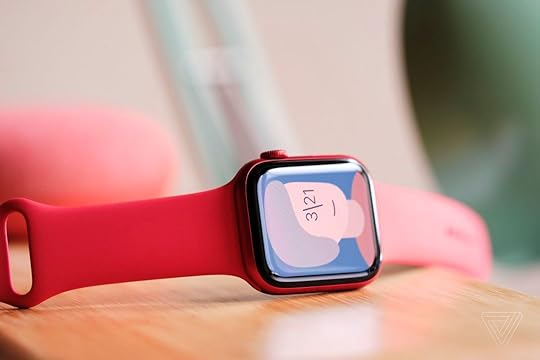 The Apple Watch Series 6, released last year. | Photo by Vjeran Pavic / The Verge
The Apple Watch Series 6, released last year. | Photo by Vjeran Pavic / The VergeThis year’s Apple Watch could feature an improved screen and updated ultra-wideband support, Bloomberg reports, but more substantial improvements like temperature and blood glucose monitoring will not appear until later models. The company is also reportedly planning a successor to last year’s more affordable Apple Watch SE, as well as a new extreme sports-focused model, due for release in 2022.
The improvements coming to this year’s model, which will almost certainly be called the Series 7, appear to be small. Its display bezels are said to be thinner, and a new lamination technique could reduce the distance between the display and the front cover. The watch’s ultra-wideband support could also be improved after getting its Apple…
The post Future Apple Watches could feature blood glucose and body temperature sensors, Jon Porter appeared first on NEWDAWN Blog.
LG’s premium G1 OLED now comes with a 5-year warranty in the US and UK, Jon Porter

 LG is now offering a 5-year warranty for its G1 OLED. | Image: LG
LG is now offering a 5-year warranty for its G1 OLED. | Image: LGLG is offering an extended 5-year warranty on its 4K G1 OLED in the US, covering any problems that develop with its panel after the standard one-year warranty. In the UK the company says the extended warranty also applies to its Z1 8K OLED. It’s unclear in how many other countries LG is offering the extended warranty, and the company did not immediately respond to The Verge’s questions.
The extended warranty appears to be an attempt to upsell customers from LG’s popular lower-end sets like the C1 to its more premium G1 model. But it should also allay any fears that the new brighter Evo OLED panel LG is using in the G1 won’t last as long as its previous OLED panels. Or, as LG said in a statement given to TechRadar, “The warranty is…
The post LG’s premium G1 OLED now comes with a 5-year warranty in the US and UK, Jon Porter appeared first on NEWDAWN Blog.
Google Workspace and Google Chat are officially available to everybody, Dieter Bohn
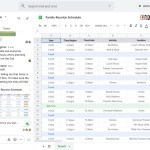
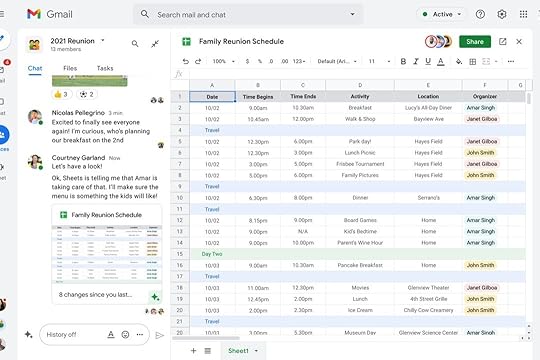
Google is announcing some changes to its Workspace suite of apps and services today, including availability for anybody who has a Google account. Google says that there are over three billion users of its Workspace apps — though it’s probably a safe bet that Gmail accounts for a healthy chunk of that userbase.
A lot of people will soon have the option to switch over to Google’s more modern system for Gmail, Docs, and Chat. All of them can be integrated in a single tab more easily, for example with chats sliding over to the left to reveal a shared spreadsheet. It’s also related to the company’s new “smart canvas” push, which is also designed to interlink its various apps via “smart chips.”
To get started, Google is now officially offering…
The post Google Workspace and Google Chat are officially available to everybody, Dieter Bohn appeared first on NEWDAWN Blog.
Amazon’s game streaming service Luna is opening access to all Prime members June 21 and 22,

Amazon is opening up access to its game streaming service Luna to all Amazon Prime members on June 21 and 22 (Amazon Prime Day). Previously, to test out Luna you had to request access or sign up from supported Fire TV devices. But for this limited-time only, any Prime subscribers in the mainland US will be able to start a 7-day trial of Luna right away.
Luna is available on Windows PC, Mac, Fire TV, and via the web on iPhone, iPad, and “select Android phones.” Regular pricing is $5.99 a month for access to games including Control, GRID, and Metro Exodus. Or, once you’ve got a Luna account, you can pay $14.99 a month for the Ubisoft Plus beta channel. This gets you access to a big range of Ubisoft games, including the latest titles from the Assassin’s Creed, FarCry, and Watch Dogs franchises.
According to 9to5Google, Amazon is also discounting its dedicated Luna controller by 30 percent from June 14 to June 22, and knocking $40 off a bundle package including the Luna controller and Fire TV Stick 4K.
If you’re a Prime member and have been curious to see how Luna stacks up against Microsoft’s xCloud or Google Stadia, this is a good opportunity to check it out. Modify your expectations, though. In our early preview of Luna in October last year, we found that the service was very hit and miss: games load fast, but the library of available titles is small and internet speeds of at least 25Mbps are necessary for smooth play.
The post Amazon’s game streaming service Luna is opening access to all Prime members June 21 and 22, appeared first on NEWDAWN Blog.
Amazon’s game streaming service Luna is opening access to all Prime members June 21 and 22, James Vincent

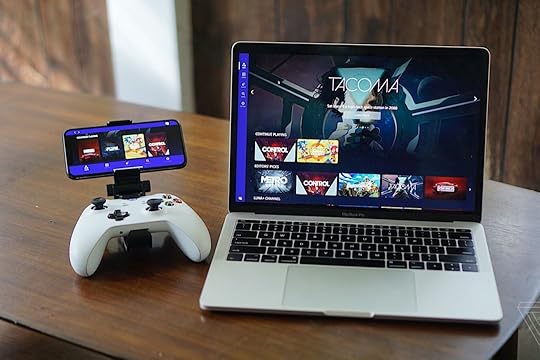
Amazon is opening up access to its game streaming service Luna to all Amazon Prime members on June 21 and 22 (Amazon Prime Day). Previously, to test out Luna you had to request access or sign up from supported Fire TV devices. But for this limited-time only, any Prime subscribers in the mainland US will be able to start a 7-day trial of Luna right away.
Luna is available on Windows PC, Mac, Fire TV, and via the web on iPhone, iPad, and “select Android phones.” Regular pricing is $5.99 a month for access to games including Control, GRID, and Metro Exodus. Or, once you’ve got a Luna account, you can pay $14.99 a month for the Ubisoft Plus beta channel. This gets you access to a big range of Ubisoft games, including the latest titles from…
The post Amazon’s game streaming service Luna is opening access to all Prime members June 21 and 22, James Vincent appeared first on NEWDAWN Blog.
Google to work with UK regulators on its big ad-tracking shakeup,
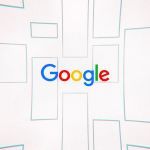
The UK’s competition regulator, the Competition and Markets Authority (CMA), will collaborate with Google as it attempts to rework online ad targeting, the regulator and Google have announced. It comes as Google is attempting to phase out the use of third-party cookies for tracking and targeting users with ads and instead use a new set of technologies it’s calling Privacy Sandbox.
In its announcement, Google said this is the first time regulators and technology companies have worked together on new technologies like this. As well as the CMA, the UK’s data protection regulator (the Information Commissioner’s Office, or ICO) will also be involved. “The CMA is taking a leading role in setting out how we can work with the most powerful tech firms to shape their behaviour and protect competition to the benefit of consumers,” the CMA’s chief executive Andrea Coscelli, said in a statement.
The collaboration comes in response to the CMA’s announcement in January that it would be formally investigating Google’s proposals, which involve using AI to bundle users together into anonymised groups to target them with ads (you can read more about the proposals here). Google’s new approach is intended as a more privacy-orientated alternative to tracking cookies, which the company intends to phase out of its Chrome browser over the next year.
However, concerns have been raised that Google’s Privacy Sandbox could harm competition, and concentrate yet more power in the hands of the search giant. There have also been concerns raised about whether the proposals are compatible with Europe’s tough GDPR data protection regulation. Meanwhile, the plans are also facing antitrust scrutiny in the US.
Google has made a series of commitments to the UK regulator about how it will develop and implement the changes. It says it will develop the plans transparently, in a way that doesn’t give itself an unfair advantage, or discriminate against its rivals. It’s also making a commitment to not combine user data from Chrome browsing histories or Google Analytics with its ad products.
For its part, the CMA says these commitments address its concerns, but it’s opening up a public consultation to help it decide whether to accept them. If accepted, the commitments would become legally binding.
The post Google to work with UK regulators on its big ad-tracking shakeup, appeared first on NEWDAWN Blog.
Google to work with UK regulators on its big ad-tracking shakeup, Jon Porter
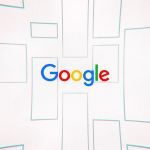
 Illustration: Alex Castro / The Verge
Illustration: Alex Castro / The VergeThe UK’s competition regulator, the Competition and Markets Authority (CMA), will collaborate with Google as it attempts to rework online ad targeting, the regulator and Google have announced. It comes as Google is attempting to phase out the use of third-party cookies for tracking and targeting users with ads and instead use a new set of technologies it’s calling Privacy Sandbox.
In its announcement, Google said this is the first time regulators and technology companies have worked together on new technologies like this. As well as the CMA, the UK’s data protection regulator (the Information Commissioner’s Office, or ICO) will also be involved. “The CMA is taking a leading role in setting out how we can work with the most powerful tech…
The post Google to work with UK regulators on its big ad-tracking shakeup, Jon Porter appeared first on NEWDAWN Blog.



